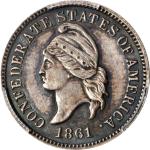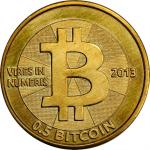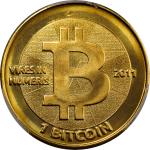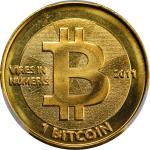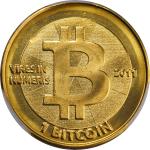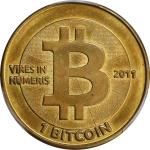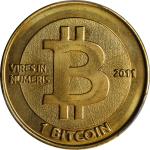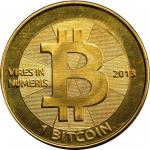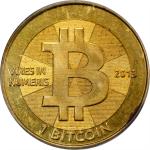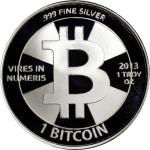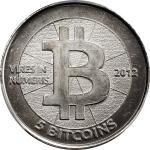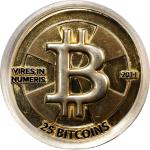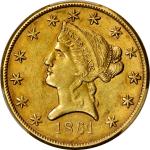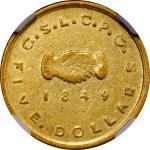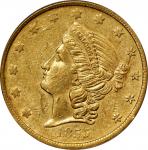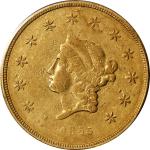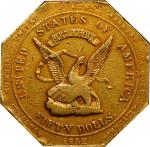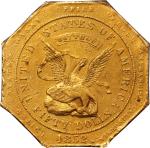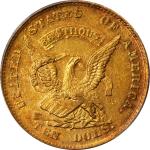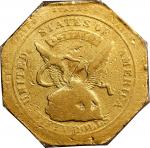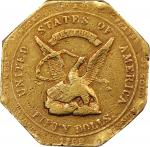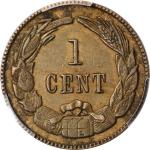1861 Confederate Cent. Original. Breen-8005. Copper-Nickel. Specimen-58 (PCGS). CAC. Medallic alignment, the reverse rotated a few degrees counterclockwise. A landmark rarity, and an exceptionally appealing example with delicate olive-gray highlights to dominant medium tan color. The surfaces are frosty and smooth with no marks of consequence. Between the rim and legends on the obverse and between the rim and wreath on the reverse are areas of darker toning and roughness that are seen on many original Confederate cents and point to their common origins and probably time spent together in a similar storage environment. All Confederate cents we have seen have been well made, their legends and devices, showing full definition and sharpness as here; details down to the kernels of corn, ribs on the barrels, and Robert Lovett, Jr.s signature incuse L in the right lower corner of the reverse cotton bale are clearly discernible under magnification. The quality here is superior for the assigned grade and point to light handling on the part of an early numismatist. Obverse design is an exact copy of Robert Lovett, Jr.s rendition of personified Liberty wearing a Phrygian cap with a band of six stars, as used on his own store card of 1860; clearly no alteration was made to his hub to draw a symbolic connection to the seven initial states to secede from the Union, as seen on the 1861 half dollar struck by the Confederacy.<p>The story of Philadelphia engraver and die sinker Robert Lovett, Jr. and his Confederate cents has attained the status of numismatic legend. Evidently sometime in early 1861, agents of the Confederacy contacted Bailey & Co. of Philadelphia, popular jewelers of the day, regarding the production of a cent for the Confederacy. Lovett, being a well known die sinker also based in Philadelphia, received this commission from Bailey & Co. and set out to produce dies for this now legendary coin. Lovett was no stranger to commissions from the South, having produced and signed a very rare white metal 1860-dated medal of the Washington Light Infantry of Charleston, South Carolina commemorating Capt. Simonton, who was later famous for his role in preventing the Union resupply of Fort Sumter. Although the order apparently came through before secession, similar to the orders for Confederate bonds and currency placed with the American Banknote Company and National Banknote Company, after going through all the labor of production, Lovett decided to deliver neither coins nor dies to the Confederacy, as hostilities had perhaps begun between the North and South. Coining for the Confederacy would have become an act of treason, and he decided to keep the cents and dies a secret, concealing them in his cellar.<p>Uncovering his cache of Confederate cents after the War, Lovett carried one as a pocket piece, which, as legend has it, he inadvertently spent in a West Philadelphia bar in the early 1870s. Noticing something unusual about the cent tendered by Lovett, the bartender held it aside for future consultation with a coin dealer.<p>This coins legendary story, we should say, was recounted at the 1908 ANA Convention by Capt. John W. Haseltine, 19th century Philadelphia coin dealer and auctioneer. It was supposedly he who had received news of this CSA cent and visited the bartender to examine it. Recognizing Lovetts work on the obverse, Haseltine badgered Lovett with regard to the CSA cent until Lovett finally acknowledged its clandestine production. At that point, Lovett is said to have pulled 11 pieces from a drawer for Haseltine, adding that he had lost a 12th.<p>Although this was the story recounted by Haseltine in 1908, it was not what he initially had to say about the Confederate cent. To numismatic researcher P. Scott Rubin goes the thanks of reintroducing to modern numismatists Haseltines original story, written in his description of the first Confederate cent to be offered at public auction (J.W. Haseltine, January 13-15, 1874, lot 665). There he relates that Dr. Edward Maris, noted Philadelphia numismatist, had acquired "either 10 or 12" Confederate cents from Lovett, of which the specimen offered in Haseltines auction was one. In any event, Haseltine, with business partner J. Colvin Randall, did in the end acquire all the original copper-nickel Confederate cents from Maris. He also acquired the dies, either directly from Lovett or from Maris. These he used to create the "first restrikes," an example of which, in addition to their story, is presented for your consideration in the lot that follows.<p>Through the work of P. Scott Rubin, John Ford, Harold Levi and George Correll, we know that the story was a bit more complex than told by Haseltine, who had a commercial interest in the Confederate cents and who probably embellished and edited the Lovett story for public consumption. We also know that more than 12 specimens must have been struck, because at least 16 have been traced so far -- the 13 recorded by Levi and Correll in their <em>The Lovett Cent: A Confederate Story</em>, (the ANS specimen in their list is incorrect and should be 1908.181.1), in addition to the Noble Family collection specimen sold by Heritage in January 2013, the Partrick specimen sold by Heritage in January 2015, and the Henry P. Kendall Foundation collection specimen that we sold in March 2015. In a conversation with John Ford before his passing, he had also enumerated specimens in various museum collections that remain unconfirmed. It should not be surprising that these 16 exist, since Edward Maris, who evidently was the buyer of many of the cents from Lovett, had stated that "I believe only about sixteen were struck" in the 1886 auction catalog of his collection.<p>To tell the story of the Confederate cents in the absence of reliable documentary evidence from government archives and correspondence as there is with the 1861 Confederate half dollars we must rely on circumstantial evidence, as well as the not always immutable stories told by Lovett, Haseltine and Maris that are probably part truth, part fiction, and part legend. The most important documents are the coins themselves, as they are tangible reminders of a pattern for the coinage for the Confederacy that never came to be and that have been actively pursued by numismatists since their discovery in 1873. Coin collectors have tended to hold their Confederate cents for decades, so the small flurry of pieces to come to market in the last dozen years should be considered an anomaly. The offered coin was certified by PCGS for the first time prior to this sale, and it represents what could very well be a once in a lifetime opportunity for an advanced numismatist. PCGS# 340404. NGC ID: 2C4V. PCGS Population 1: 8 finer (Specimen-64+ finest).

